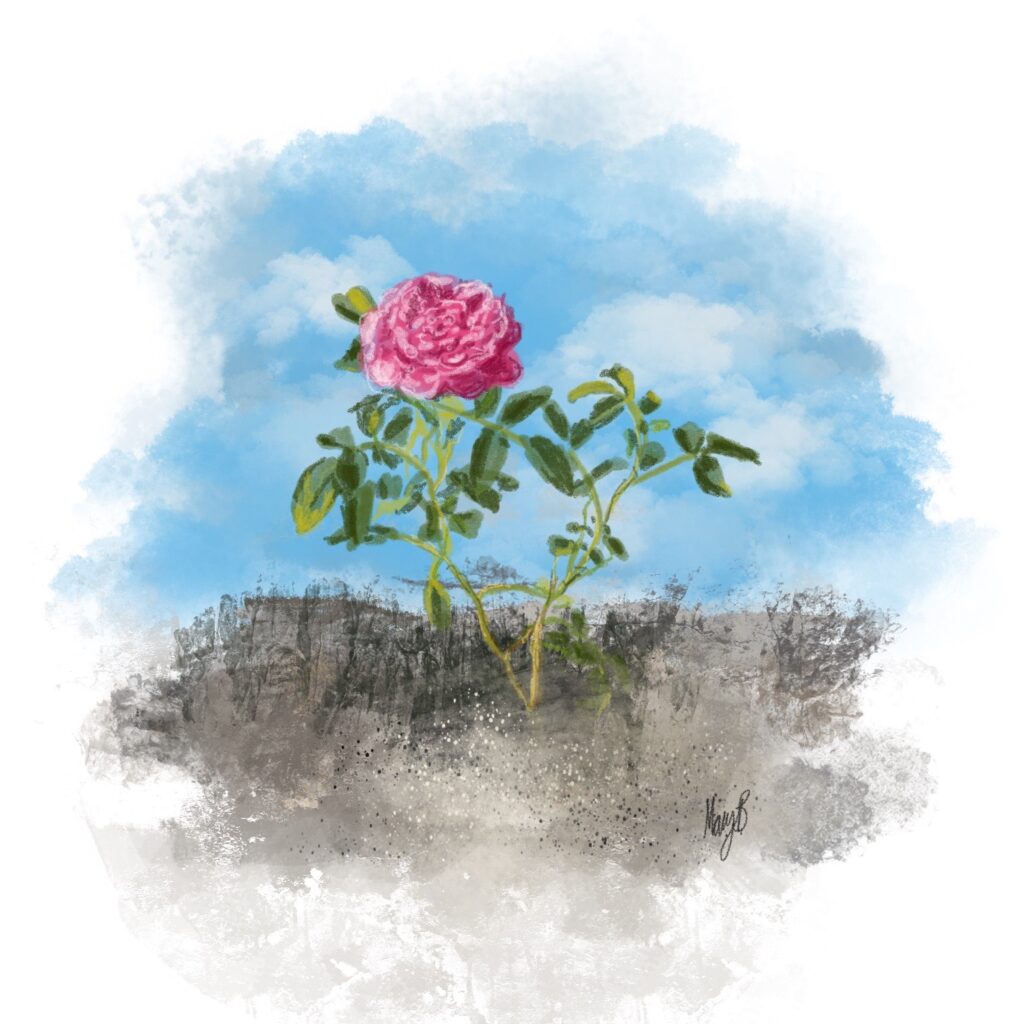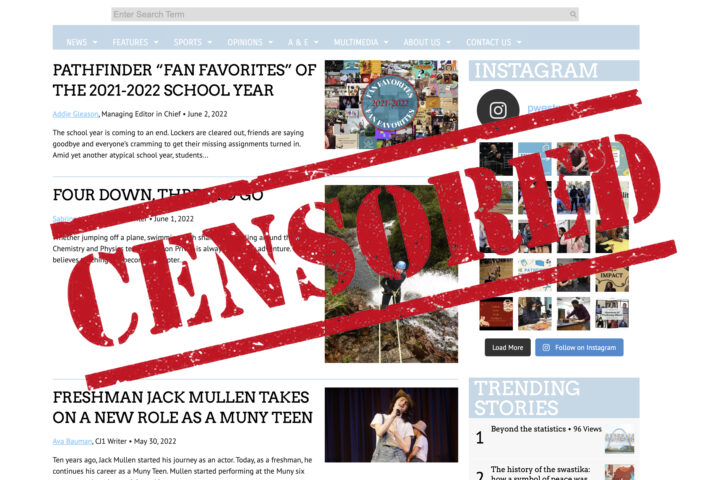Cora Fernandez was asleep in her Makawao home on the evening of Aug. 8, 2023 when she awoke to her best friend sobbing. Fernandez, 19, was in her childhood bedroom, and the 11:00 p.m. sky should have been dark. Instead, an orange glow cast across the horizon.
Flames were barely visible as they encroached upon the highway a few miles away. Fernandez’s friend was suddenly in her room because she and her family had been forced to flee Lahaina, nearly an hour’s drive west. They left everything else behind.
Shock set into Fernandez’s body. “This can’t be real,” she thought.
When daylight broke the following morning, Fernandez and her friend would find their island ravaged by the United States’ deadliest wildfire since the 19th century. Among the more than 2,170 acres and 2,200 structures burned were the campuses of four area schools, together serving more than 3,000 local students. King Kamehameha III Elementary School in the western Maui town of Lahaina was completely destroyed by the blaze.

“It was traumatic for the whole island but especially for the kids,” Fernandez says about the days immediately following the fires. “Like, just to have this unpredictability that disrupted such an important part of life for stability.”
A couple of days later, college freshman Sydney Smith was driving to Kula, a small town south of Makawao on the island of Maui. She took the road that she had driven daily for twelve years on her regular commute to school. It wound through pastures and palm trees, the cows and sheep roaming black and white dots in the greenery. Yet on that mid-August day, the pastures were not as Smith remembered them. Everything was burned. The trees were dead, their yellow faces scorched. An eerie silence crept over the meadow as Smith stopped the car.
“I just sat there and cried,” Smith says, describing the aftermath. “As soon as I saw the first bit, I just cried for the next 20 minutes or so, processing everything.”
Smith’s little sister, Juliette, is a high school junior at Seabury Hall, a private college preparatory school in Makawao. After the fires, the first few days of classes were postponed. By the following week, Smith says Juliette was back at school, even as the fires had yet to be completely contained.
“Some teachers would talk about the fires, but they kind of just had to get into class,” Smith says about her sister’s first days back at Seabury.
Leela Wat, a college sophomore who graduated from Seabury along with Smith in 2022, explains that the fires occurred right as students were scheduled to begin the new school year. She says some of Seabury’s teachers live in a residential community close to the school’s campus, and that many were forced to evacuate as the fires crept toward Maui’s upcountry neighborhoods.
“They went through personal fear while also trying to plan for the first day of school and make sure that all of their students were okay,” Wat says. Adults in her school’s community tried to maintain a sense of normalcy after the fires in an effort to support their students. Wat’s high school basketball coach was among those who lost their home, but she continued to host practices to help support her players in the weeks after the fires.
The public schools on the island did not resume classes for at least two weeks after the fires, Smith says. The campuses of Princess Nāhi‘ena‘ena Elementary, Lahaina Intermediate and Lahainaluna High School were all damaged, meaning students had to transfer to other area schools as they waited on the rebuilding process. Wat says the school district made an effort to keep students with their same class cohorts and teachers as they assimilated to different schools in order to establish a sense of normalcy.
As the Environmental Protection Agency has tracked the increasing frequency of wildfires in the U.S. since the 1980s, school systems across the country have grappled with fire-related disruptions. Northern California’s 2018 Camp Fire – which was, after Maui, the country’s second most fatal blaze in over a century – forced 15% of the state’s schools to close, impacting 935,000 students. Some schools shuttered their doors for as long as 17 days while the region burned. In Reno, Nevada, the air quality was so poor during the 2021 fire season that the Washoe County district canceled several days of classes, leaving some 67,000 students out of school. In November 2023, some Tennessee students started their Thanksgiving breaks prematurely, with school closures going into effect while the Black Bear Fire in the Great Smoky Mountains was contained.
In Maui, Wat and her father had originally planned to depart from the island on Aug. 8 ahead of her own classes starting at Vanderbilt University. Their plans quickly changed due to the fires. Wat says she felt adamant about not abandoning her community during what she calls its “most dire time.”
Like Smith and Fernandez, Wat began working with recovery efforts, most of which emerged through grassroots collectives. Wat assisted her father, a surgeon, with providing burn care to victims at shelters and damage sites where people were living in the days immediately following the fires. In the weeks since the fires, some 100 people are known to have lost their lives during the blaze.
Smith volunteered with the Humane Society to organize disaster relief supplies that came in a handful of UPS delivery trucks each day. The Chief Executive of Maui’s Humane Society has estimated that as many as 3,000 animals were lost in the fires. Smith says she had to persuade people in need to take more supplies, as many wanted to leave enough for others with greater needs. Such attitudes are characteristic of the Maui community, according to Smith, who describes her home as strong and self-sufficient.
Fernandez agrees with Smith. She joined grassroots groups in the wake of the fires to support cleanup and recovery.
“That’s what the culture here is all about, helping your neighbor,” Fernandez says.
In the wake of the fires, the estimated costs to rebuild the town of Lahaina and surrounding communities range between $4–6 billion. Insurance and federal and state aid will work to cover the costs, with substantial amounts of funding coming from federal sources such as the U.S. Department of Housing and Urban Development and the Federal Emergency Management Agency.
As the island continues to recover, the young women are not blind to the broader challenges the fires have exposed as they relate to climate change or existing injustices. Fernandez explains that some Lahaina residents have been served with 45-day eviction notices while outsiders angle to buy property out of native hands.
“It just feels so unsure and unsafe. It’s like, how are you going to evict people who’ve gone through trauma and sleep at night?” Fernandez says.
Smith, who studies environmental science at Oregon State University, says the role of climate change in the fires is hard to ignore. Even though the connection between Hurricane Dora, which is thought to have spurred the fires, and global warming makes sense to Smith from a scientific standpoint, she feels jarred by the reality of seeing climate change’s impact on her community.
“I went into environmental science because I’m fully aware of global warming, but it was always something you see little things or hear about, never something that burns a whole town down,” Smith says.
The young women say they also worry about the impacts of tourism on the island as it rebuilds. Smith says she is doubtful that people will treat Maui any differently than they did before the fires, or recognize it as anything other than a beautiful vacation spot. Fernandez echoes that she feels frustrated on some levels for the extent to which the community has had to support itself through the recovery efforts.
As they look toward the future, both Smith and Fernandez speak to the strength of their community and the pride they feel to belong to it.
“I wouldn’t have the optimism I have if it weren’t for the people around me,” Fernandez says.
Smith agrees. “I didn’t fully comprehend what we would do for each other,” she says. “It just proved everything that I already knew about Maui as a community.”



